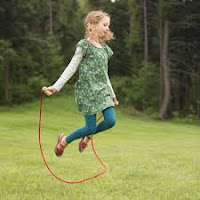But then, a big part of the fun was the collecting and preparing of the conkers.

Guy Fawkes night, or Bonfire night, on November 5th, was a time we all looked forward to
We didn't have much in the way of toys - or cash - so many of our playthings were home-made. Nearly every boy had a catapult (ging, or shanghai). We sometimes had shooting contests to test our accuracy and range, with great prestige to be gained from these. I guess they were pretty dangerous toys, really, but I don't recall anyone being seriously hurt by them, although windows sometimes were. Our catapults were made from a forked stick, a strip of car or bike inner-tube rubber, and a leather pad to hold the stone. Bows and arrows were also made from the willow trees down The Lane.


Next in importance were the Tom-bowlers. These had similar patterns, but were larger, from about 2cm to 3cm.
At the bottom of the scale were the "clayeys", which were about the same size as glassies but made of clay and painted in various colours. The clay material was quite soft so these could sometimes be crushed or broken by a Tom-bowler, or even a glassy.
The ultimate marble was actually not a marble at all: it was a steel ball-bearing, usually from a car or truck! They could range from "normal" 1cm to impressive 3cm balls that could destroy a glass or clay opponent!


Most of the above games were male-oriented, although some girls also played them. Girls mostly seemed to enjoy less-competitive activities like rope-skipping and hop-scotch, both of which were played in a similar way as they are today..
 Rope-skipping had two forms, single and double-ended. In the single version, the player held a short piece of rope at each end and swung it repeatedly over their head, jumping over it each time it came down. There were tricks to be learned, such as double-skipping (two passes over the head for each jump), high-speed skipping, and reverse skipping. Sometimes a friend would join in jumping the same rope. In double-ended skipping, a longer rope was used, and was swung by two players, while the other players skipped over the rope together. Sometimes two ropes were swung in opposite directions, making it much more difficult.
Rope-skipping had two forms, single and double-ended. In the single version, the player held a short piece of rope at each end and swung it repeatedly over their head, jumping over it each time it came down. There were tricks to be learned, such as double-skipping (two passes over the head for each jump), high-speed skipping, and reverse skipping. Sometimes a friend would join in jumping the same rope. In double-ended skipping, a longer rope was used, and was swung by two players, while the other players skipped over the rope together. Sometimes two ropes were swung in opposite directions, making it much more difficult.
Hop-scotch was played on a set of squares drawn or scratched on the ground. Players took turns to throw a small stone or tile into one of the squares, then hop on one foot from one square to the next until the last square was reached, then return, picking up the tile as they passed, still balancing on one leg. This game suited our area well, as most families were pretty strapped for cash, and this required only a flat stone to be able to play.
At night, we played in the streets. They were much safer back then, with no traffic, and much less "predatorial" activity.
Our favourite game, played almost every night was hide-and seek. The rules meant you could only hide in our street or the adjoining one. A variation of this was "relievo", where one person was "It" and had a "Home" base, usually the base of a lamp-post, and the others scattered around the area. "It" had to try to touch each of the others, and they would then have to return to Home. But the tricky part was, those who were not caught could sneak back around It and if they managed to reach Home they would call out "relievo", and all those already caught would be released. When all were caught, the first caught would become It.


Lots of great memories evoked here!
ReplyDeleteYes; I regret the passing of "conkers", especially, although I believe it's still played by a few people. It was a very popular, and harmless game in my day.
ReplyDelete